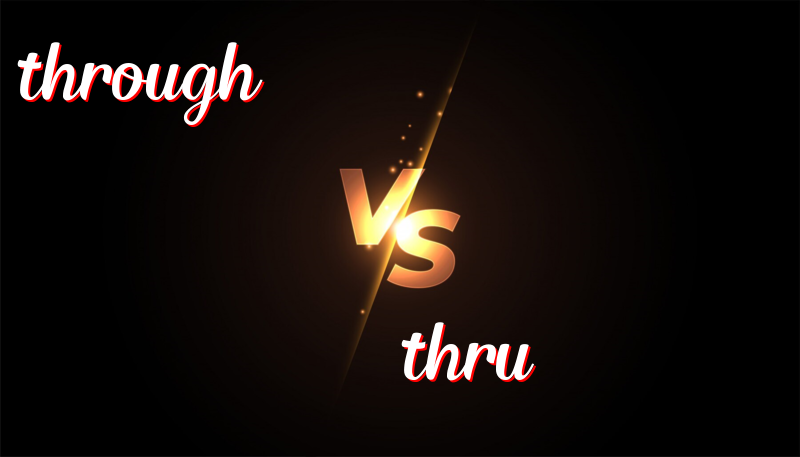Through vs. Thru: A Tale of Two Words
Through vs. Thru
Through and thru are two words that many people get confused about. Let’s explore the history, meanings, and usage differences between these similar words.
History:
“Through” is an older word, traced back to Old English. It has been around for a long time. On the other hand, “thru” is a simpler, informal way of spelling “through” that emerged in the early 20th century.
How to Use Them:
- Through: Use “through” when you want to indicate moving in one side and out of the other side of an opening or a place.
- Thru: “Thru” is often used in informal writing or signage to mean the same as “through.”
Examples:
Through:
- I walked through the park to get to school.
- The ball went through the window and broke it.
- We need to read through the whole book for the test.
- She looked through the telescope to see the stars.
- The train passed through the tunnel.
Thru:
- Drive thru the entrance, and you’ll see the parking lot on your left.
- Order your food thru the drive-thru window.
- Don’t stop and just go thru the gate quickly.
- Her ideas went thru many revisions before being finalized.
- They communicated thru letters while being far apart.
Trick to Remember the Difference:
Think of “through” with the extra “gh” as the longer and more formal version compared to “thru.” If you’re writing something formal or academic, use “through.” For casual writing or quick messages, you can opt for “thru.”
Summary:
In summary, “through” is the more traditional and formal spelling, while “thru” is its simplified, informal counterpart. Remember to use “through” for most situations, especially in formal writing, and reserve “thru” for informal contexts or when space is limited.

Leave a Reply
You must be logged in to post a comment.